Bumblebee Bombus vestalis
This species of cuckoo bee grows up in the nests of the Buff-tailed Bumblebee (Bombus terrestris). This parasitic bee differs from having a conspicuous yellow patch on either side of the abdomen. Other differences include a lack of pollen baskets on the legs, thinner coats, and making a soft murmuring rather than a definitive buzz. This is a short-tongued bee. Also called the ‘Southern Cuckoo Bumblebee’. Similar to the Gypsy Cuckoo-bee (Bombus bohemicus), where the patches aren’t so dominant and are smaller. Sizes male 15 to 19mm, female 20 to 24mm.
Like all cuckoo bees, they have no worker caste as their own, so they invade the hosts’ nests and take the work force for its own. Important plant pollinators.
The female will seek out its host’s nest and will fight off any hostilities towards her, eventually killing the queen of the nest and her offspring, and effectively she will run the show from then onwards, utilising the remaining workers for her and her young’s own benefits. Its hosts’ nests are generally old mouse holes. Feeds on nectar and pollen.
Seen March to August, and found in differing habitats, including gardens and grassland. Males regular in suburban gardens. Common in the south of England and Wales.
June 2007, front garden, Staffordshire. © Pete Hillman 2007.
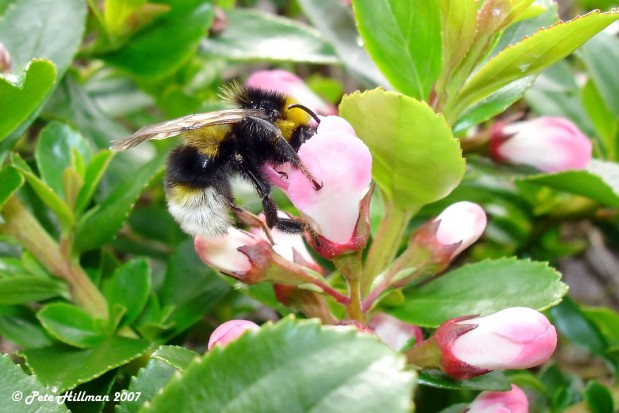
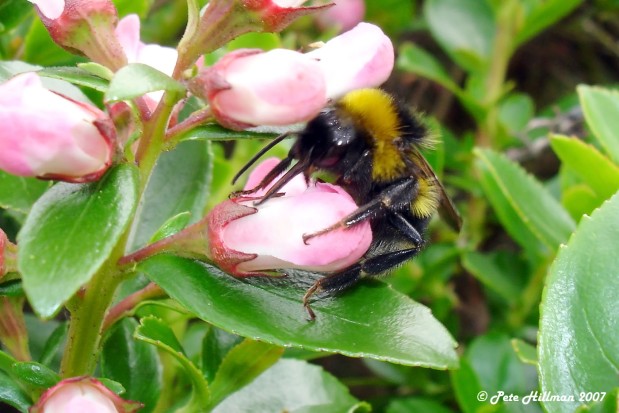
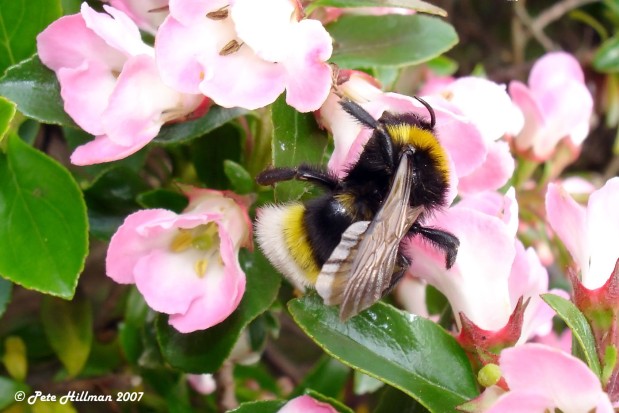
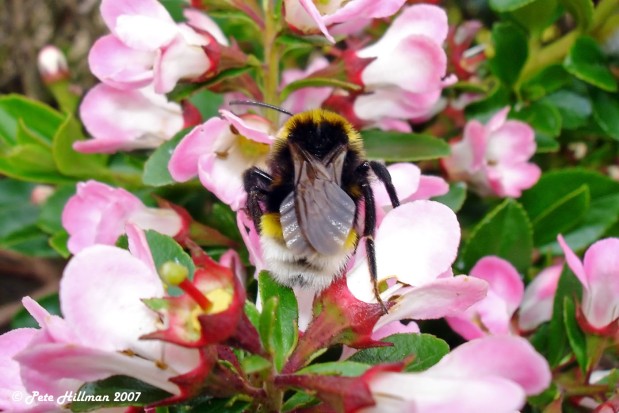
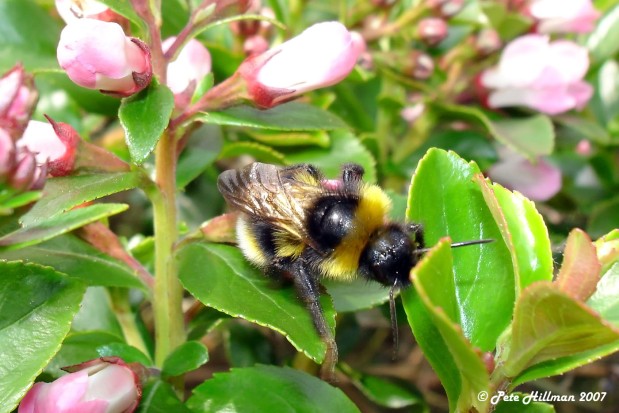
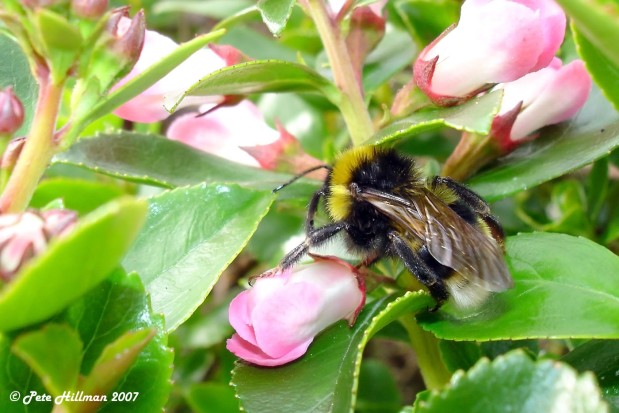
Quite the little dictators. Excellent photos!
LikeLiked by 1 person
Indeed they are. Thank you 🙂
LikeLiked by 1 person
I’m so enjoying your bee 🐝and flowers 🌸 combination 😍
LikeLiked by 1 person
Thank you very much, Snehal 🙂
LikeLiked by 1 person
Great photos and very informative – never realized a cuckoo bee existed. Now I’m wondering what types of bees dwell in my area near Vancouver, British Columbia. Thanks to your blog, I’m now thinking about getting a macro lens.
LikeLiked by 1 person
Thank you for your lovely comment, Michael 🙂 Until I started photographing and identifying the bees which visited my garden some 18 years ago now, I did not realise just hown many species there were, or what a cuckoo bee was myself! A lot of the older images here of the bees I took with a compact camera, but when I eventually went to DSLR and bought a macro lens it was one of the best things I ever did. I hope you get to discover many bees on your side of the pond, and maybe get some images, too!
LikeLike
Thanks for reply – I recently purchased a Lumix G85 mirrorless camera which I’m really enjoying. It has an amazingly bright and sharp electronic viewfinder – which is great for viewing with my glasses on. I just bought a 14-140 zoom (equivalent 28-280mm) – So far I am very happy with it – I captured the “Canada Geese Reflections” from a bridge some distance away. Now I need to find out the cost of a nice macro lens.
LikeLiked by 1 person
This sound like a great camera! Macro will lead you into a wonderful other world. Trouble is, macros are not always cheap, but you can get some fantastic images with them.
LikeLiked by 1 person